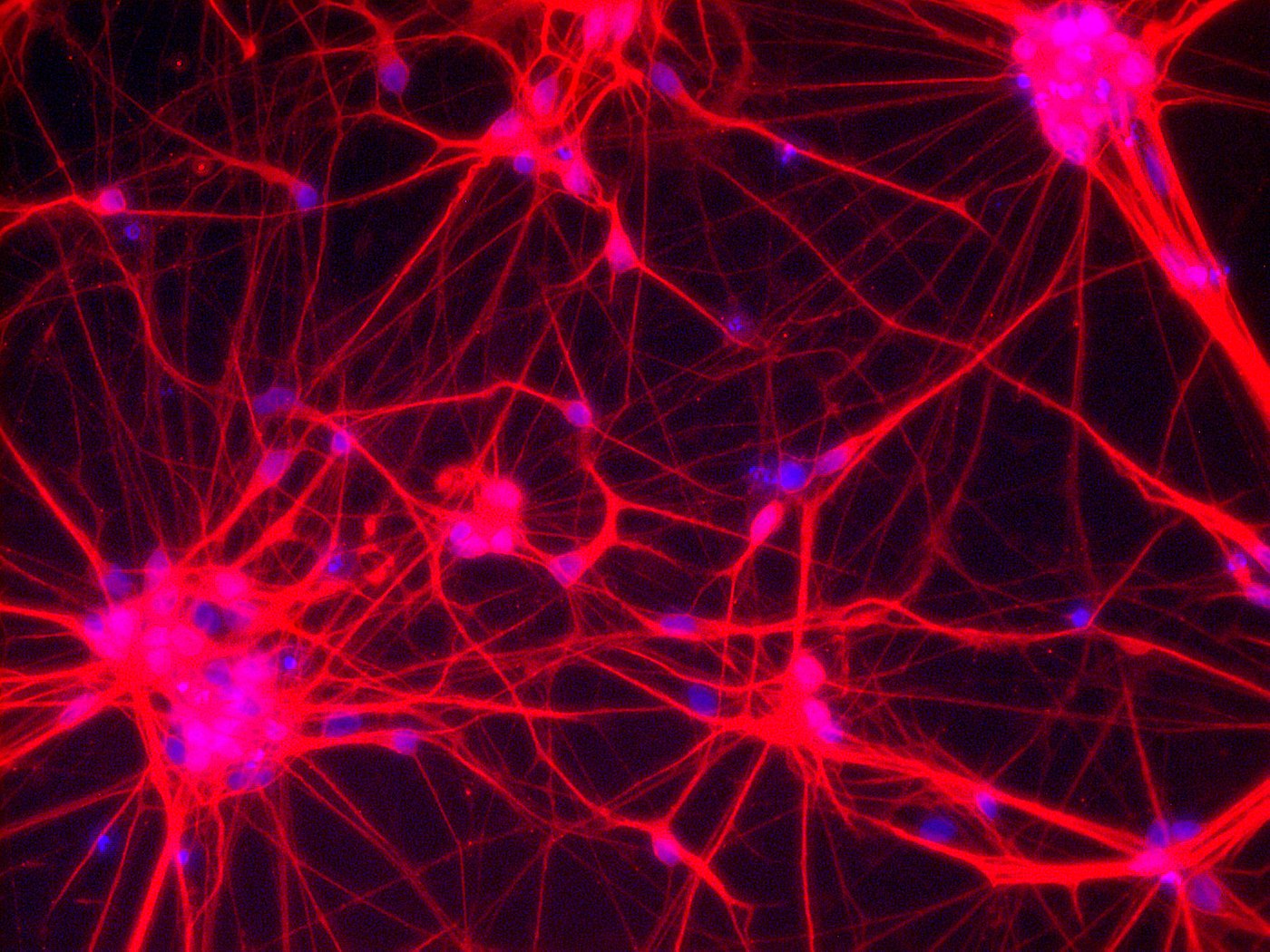
Neurons – Network of neuronal cells (Blue: nucleus; Red: neurons) [Copyright: Institute for Transfusion Medicine, UK Essen]
Translational stem cell research projects bridge the gap between fundamental research carried out in the lab and the application of this research to the field of patient care.
Who are the people behind these kinds of projects? What interests them - in their own research field, but also above and beyond it? What drives them right now?
The aim of this series is to try and make the abstract term ‘translation’ more tangible and to give a glimpse behind the scenes of the world of translational stem cell research. The series starts with PD Dr. Sabine Neuß-Stein from Aachen.
I am … Sabine Neuß-Stein, 39 years old, a biologist, wife, mother to a 5-year-old daughter, head of the interdisciplinary working group on “Stem Cells and Tissue Engineering” at the University Hospital Aachen for the past 12 years and a passionate researcher. Together with scientists from the Working Group on “Tissue Engineering and Biomaterials” at the Helmholtz Institute of RWTH Aachen, from the plastic surgery clinic at Düsseldorf University Hospital and the company Miltenyi, I am one of the winners of the “Translational Stem Cell Research” funding competition. Our StemGraft consortium is working on translating a small-diameter vascular graft to the clinic. This has already proven to be an outstanding improvement to the gold standard in animal models (sheep). A combination of textile material, fibrin gel, autologous cells (mesenchymal stem cells and endothelial cells) and a special bioreactor conditioning were expedient here. In the StemGraft project, all the working steps for manufacturing the vascular prosthesis were transfered from the ovine to the human system. In my part of the project, we expanded and characterised endothelial cells and mesenchymal stem cells (MSCs) under conditions (xeno-free, serum-free) that complied with good manufacturing practice (GMP) for medicines and medicinal products. We differentiated the MSCs into smooth muscle cells, before they were then conditioned as part of the vascular graft in the bioreactor. Over the 18-month funding period, we were able to successfully manufacture prototypes at significantly reduced production times and we are currently testing these prototypes for functionality.
What importance does the funding from the call ‚Translational Stem Cell Research’ have for you personally and for your work in general? The funding was particularly important for my work, as although I have been working for 15 years in the field of stem cell-based tissue engineering (chiefly in the field of bone replacement strategies), up until now there had been no budget available to fund the first steps to translation. However, in tissue engineering, translation is a logical and absolutely imperative step - a step which ought to be consistently pursued. As a result of the funding, we were able to establish protocols on GMP-compliant working processes in the StemGraft project, which are now being applied to all current and future research projects with MSCs and endothelial cells in my working group. This significantly reduces the preclinical phase of my tissue engineering projects and will probably have a positive impact on future research applications.
A current science highlight for me is … In general, I am fascinated by the progress made in the iPS cell community, even if I haven't worked with iPS cells myself (yet). Less than 10 years after Yamanaka first described the discovery, there is now an initial clinical trial on treating macular degeneration and exciting basic research is taking place on self-organising organoids (optic cups, mini brains, mini guts etc.). What particularly interests me here is the interplay between pluripotent stem cells, MSCs and endothelial cells to generate functional organoid units - as described in the work of Takebe et al. (Nature, 2013 and Cell Stem Cell, 2015).
What I would like to do this month other than science … Celebrate, when Germany wins Euro 2016 on 10 July and plan my next holiday in detail - South Africa is calling!